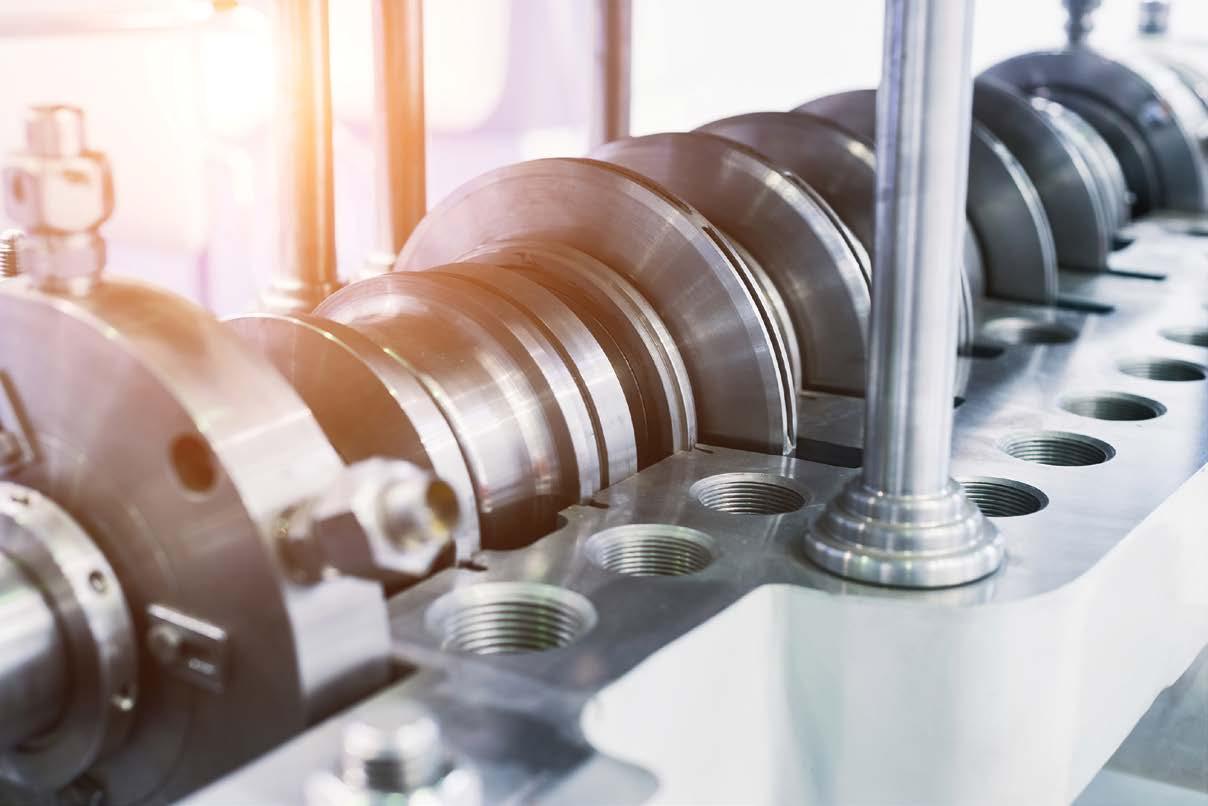
4 minute read
Predictive maintenance of rotating equipment Relayr
NEW PERSPECTIVES: PREDICTIVE MAINTENANCE OF ROTATING EQUIPMENT
Rotating equipment is central to industrial production and manufacturing. That’s why reliability is essential. To ensure reliability, operators of rotating equipment seek to keep factors like alignment and balance at peak potential. But constant stress on machinery components poses the continual threat of failure and unwanted downtime.
Considering the variety of pressure points and torsional stress points at every connection in a piece of rotating equipment, it comes as little surprise that proper maintenance is priority number one to keeping runtimes steady and uninterrupted. With high pressure and intense rotational power at the core of these technologies, stress points are focused on the seals, belts, brakes, and bearings that connect the moving parts of a rotating machinery asset.
The Status Quo
In general, there are three main strategies or philosophies about maintaining equipment assets: reactive, preventative, and predictive. Reactive maintenance, the earliest and most basic form, is the ‘strategy of reaction’ or deciding to repair or replace a part only after it has broken or become worn down to the point of failure. Unfortunately, this strategy often leads to service providers focusing on fixing symptoms rather than addressing the core problem itself. This can mean that a part is repeatedly replaced or repaired after being worn down when the root cause could have been identified and managed before the endless repair loop started.
Preventive maintenance (sometimes called ‘planned maintenance’) describes the strategy of implementing scheduled service tasks over a defined period while the equipment is still in regular operation to avoid unexpected part breakdowns (and their extra costs) over the lifetime of a piece of equipment. Equipment assets are temporarily taken offline at predefined time intervals where predefined maintenance and replacement tasks are carried out. Studies show that preventive strategies can provide 12-18% cost savings on average compared to reactive strategies.
The Way Ahead
Is preventive maintenance the most efficient approach to keep rotating equipment at peak performance? Measurements of alignment, balance, vibration, lubrication, temperature, and shock are among the most important numbers to monitor to prevent unnecessary breakdowns. Sensors could be used along the production chain to monitor these numbers. The more sophisticated the system, the earlier that potential problem areas can be isolated and corrected before more costly damage occurs.
The next generation of condition monitoring goes beyond ‘preventing’ failures to ‘predicting’ failures. It takes advantage of modern
sensor technology combined with artificial intelligence to offer the user unprecedented levels of oversight and predictive analysis.
Predictive maintenance is the newest iteration of maintenance strategy, given its reliance on digital technology and IIoT implementation. It is probably also the fast-growing mode of maintenance strategy, taking into consideration its long-term financial benefits. By actively monitoring equipment performance with comparative analytics, industrial companies can make predictions about when and where an asset will fail, thus allowing service professionals to take steps to correct an issue before it reaches the point of failure.
Predictive maintenance strategies, when properly implemented, are superior to both reactive and preventive strategies in that equipment is neither run to failure (as in the former) nor are parts unnecessarily replaced (as in the latter). Ideally, an innovative predictive maintenance implementation will allow companies to make maintenance operations at the opportune time, not too early (thus wasting parts) or too late (missing root causes). Studies have shown average cost savings of 8-12% in predictive strategies compared to preventive ones. However, there is plenty of evidence that the upside advantages are even greater when considered over the entire lifecycle of a piece of equipment.


Getting to the Root
Early warning systems are essential in rotating equipment to escape cascading impairment chains that lead to exponential damage, repair costs and, ultimately, failure. Maximizing efficiencies while minimizing downtimes is the name of the game. Identifying mechanical faults is a constant challenge for operators of rotating machinery such as engines, motors, turbines, pumps, conveyors, compressors, gearboxes and the like. Most faults are detectable, experts say, though the appropriate sensor technology and IIoT interface is not always installed.
Root causes of failure can be identified with sufficiently advanced condition monitoring, whether they be factors of misalignment, unbalance, under lubrication, looseness, etc. Having the right condition monitoring system in place with the right digital solution (AI) gives operators the tools they need to identify the root causes of mechanical failure and boost reliability to its highest possible level. Furthermore, early warning with condition monitoring and eliminating root causes can ensure users of rotational equipment the longest possible life and value on their initial investment (ROI).
A new white paper from relayr presents the benefits of predictive maintenance solutions when combined with digital service-first business models. n













